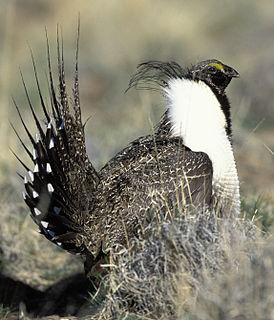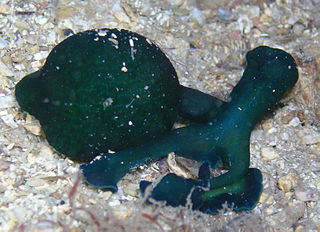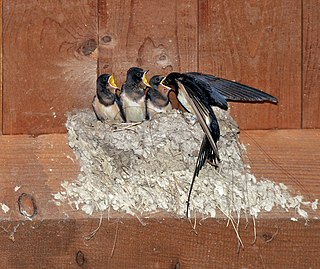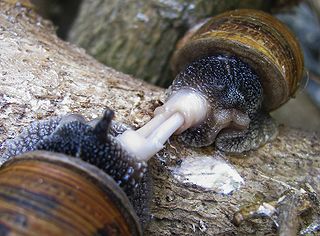Related Research Articles

An eared seal or otariid or otary is any member of the marine mammal family Otariidae, one of three groupings of pinnipeds. They comprise 15 extant species in seven genera and are commonly known either as sea lions or fur seals, distinct from true seals (phocids) and the walrus (odobenids). Otariids are adapted to a semiaquatic lifestyle, feeding and migrating in the water, but breeding and resting on land or ice. They reside in subpolar, temperate, and equatorial waters throughout the Pacific and Southern Oceans and the southern Indian and Atlantic Oceans. They are conspicuously absent in the north Atlantic.

Grouse are a group of birds from the order Galliformes, in the family Phasianidae. Grouse are presently assigned to the tribe Tetraonini, a classification supported by mitochondrial DNA sequence studies, and applied by the American Ornithologists' Union, ITIS, International Ornithological Congress, and others. Grouse inhabit temperate and subarctic regions of the Northern Hemisphere, from pine forests to moorland and mountainside, from 83°N to 28°N.

Sexual dimorphism is the condition where the sexes of the same species exhibit different characteristics, particularly characteristics not directly involved in reproduction. The condition occurs in most animals and some plants. Differences may include secondary sex characteristics, size, weight, colour, markings, or behavioural or cognitive traits. These differences may be subtle or exaggerated and may be subjected to sexual selection and natural selection. The opposite of dimorphism is monomorphism, which is when both biological sexes are phenotypically indistinguishable from each other.

A lek is an aggregation of male animals gathered to engage in competitive displays and courtship rituals, known as lekking, to entice visiting females which are surveying prospective partners with which to mate. A lek can also indicate an available plot of space able to be utilized by displaying males to defend their own share of territory for the breeding season. A lekking species is characterised by male displays, strong female mate choice, and the conferring of indirect benefits to males and reduced costs to females. Although most prevalent among birds such as black grouse, lekking is also found in a wide range of vertebrates including some bony fish, amphibians, reptiles, and mammals, and arthropods including crustaceans and insects.

The great reed warbler is a Eurasian passerine in the genus Acrocephalus.

The black-throated blue warbler is a small passerine bird of the New World warbler family. Its breeding ranges are located in the interior of deciduous and mixed coniferous forests in eastern North America. Over the cooler months, it migrates to islands in the Caribbean and Central America. It is very rarely found in western Europe, where it is considered to be a non-indigenous species. The black-throated blue warbler is sexually dimorphic; the adult male has a black face and cheeks, deep blue upperparts and white underparts, while the adult female is olive-brown above and light yellow below.

The Alpine ibex, also known as the steinbock, bouquetin, or simply ibex, is a species of wild goat that lives in the mountains of the European Alps. It is a sexually dimorphic species: males are larger and carry longer, curved horns than females. Its coat colour is typically brownish grey. Alpine ibex tend to live in steep, rough terrain near the snow line. They are also social, although adult males and females segregate for most of the year, coming together only to mate. Four distinct groups exist; adult male groups, female-offspring groups, groups of young individuals, and mixed-sex groups.

The lemon shark is a species of shark from the family Carcharhinidae and is classified as a Vulnerable species by the International Union for the Conservation of Nature. Lemon sharks can grow to 3.4 metres (11 ft) in length. They are often found in shallow subtropical waters and are known to inhabit and return to specific nursery sites for breeding. Often feeding at night, these sharks use electroreceptors to find their main source of prey: fish. Lemon sharks enjoy the many benefits of group living such as enhanced communication, courtship, predatory behavior, and protection. This species of shark gives birth to live young, and the females are polyandrous and have a biennial reproductive cycle. Lemon sharks are not thought to be a large threat to humans. The lemon shark's life span is unknown, but the average shark is 25 to 30 years old.

Sequential hermaphroditism is a type of hermaphroditism that occurs in many fish, gastropods, and plants. Sequential hermaphroditism occurs when the individual changes its sex at some point in its life. In particular, a sequential hermaphrodite produces eggs and sperm at different stages in life. Species that can undergo these changes from one sex to another do so as a normal event within their reproductive cycle that is usually cued by either social structure or the achievement of a certain age or size.

Animal sexual behaviour takes many different forms, including within the same species. Common mating or reproductively motivated systems include monogamy, polygyny, polyandry, polygamy and promiscuity. Other sexual behaviour may be reproductively motivated or non-reproductively motivated.

Environmental sex determination is the establishment of sex by a non-genetic cue, such as nutrient availability, experienced within a discrete period after fertilization. Environmental factors which often influence sex determination during development or sexual maturation include light intensity and photoperiod, temperature, nutrient availability, and pheromones emitted by surrounding plants or animals. This is in contrast to genotypic sex determination, which establishes sex at fertilization by genetic factors such as sex chromosomes. Under true environmental sex determination, once sex is determined, it is fixed and cannot be switched again. Environmental sex determination is different from some forms of sequential hermaphroditism in which the sex is determined flexibly after fertilization throughout the organism’s life.

Parental care is a behavioural and evolutionary strategy adopted by some animals, involving a parental investment being made to the evolutionary fitness of offspring. Patterns of parental care are widespread and highly diverse across the animal kingdom. There is great variation in different animal groups in terms of how parents care for offspring, and the amount of resources invested by parents. For example, there may be considerable variation in the amount of care invested by each sex, where females may invest more in some species, males invest more in others, or investment may be shared equally. Numerous hypotheses have been proposed to describe this variation and patterns in parental care that exist between the sexes, as well as among species.
Sexual segregation, in biology, is the segregation of males and females into different groups or the differential use of space, habitats, and resources by the males and females of a species outside the breeding season.

A courtship display is a set of display behaviors in which an animal, usually a male, attempts to attract a mate; the mate exercises choice, so sexual selection acts on the display. These behaviors often include ritualized movement ("dances"), vocalizations, mechanical sound production, or displays of beauty, strength, or agonistic ability.

In reproductive biology, a hermaphrodite is an organism that has both kinds of reproductive organs and can produce both gametes associated with male and female sexes.

Tetrix ceperoi, Cepero's groundhopper, is a member of the family Tetrigidae and is very similar to common grasshoppers. Grasshopper is defined as a "plant eating insect with long hind legs that are used for jumping and for producing a chirping sound". However, unlike the common grasshopper, the wings of T. ceperoi extend beyond its pronotum. The front wings have evolved throughout history to be stumps, and the back wings are very well developed. Thanks to the front wings only, T. ceperoi is capable of flying. Furthermore, T. ceperoi sports wide shoulders while covering its narrow abdomen beneath the pronotum. T. ceperoi are classified as Orthoptera, which describes crickets, grasshoppers, and locusts. Furthermore, these Orthoptera have incomplete metamorphosis, which also affects sexual dimorphism later. T. ceperoi reach an average length of about 10 millimetres (0.39 in). T. ceperoi is a multi-coloured ground dweller with the ability to blend into its surroundings. The ability of T. ceperoi to be different colours makes it able to evolve colour schemes better adapted to specific habitats. This cryptic nature of their outer layer provides protection from predators as it is able to blend into its surroundings. T. ceperoi is diurnal, which means it is solely active in the daytime. However, although it is diurnal, it continues to hibernate during a late nymphal instar or later on in life as adults.
Polygyny is a mating system in which one male lives and mates with multiple females but each female only mates with a single male. Systems where several females mate with several males are defined either as promiscuity or polygynandry. Lek mating is frequently regarded as a form of polygyny, because one male mates with many females, but lek-based mating systems differ in that the male has no attachment to the females with whom he mates, and that mating females lack attachment to one another.

Sexual selection in amphibians involves sexual selection processes in amphibians, including frogs, salamanders and newts. Prolonged breeders, the majority of frog species, have breeding seasons at regular intervals where male-male competition occurs with males arriving at the waters edge first in large number and producing a wide range of vocalizations, with variations in depth of calls the speed of calls and other complex behaviours to attract mates. The fittest males will have the deepest croaks and the best territories, with females known to make their mate choices at least partly based on the males depth of croaking. This has led to sexual dimorphism, with females being larger than males in 90% of species, males in 10% and males fighting for groups of females.
Parthenogenesis is a mode of asexual reproduction in which offspring are produced by females without the genetic contribution of a male. Among all the sexual vertebrates, the only examples of true parthenogenesis, in which all-female populations reproduce without the involvement of males, are found in squamate reptiles. There are about 50 species of lizard and 1 species of snake that reproduce solely through parthenogenesis. It is unknown how many sexually reproducing species are also capable of parthenogenesis in the absence of males, but recent research has revealed that this ability is widespread among squamates.

In behavioral ecology, polyandry is a class of mating system where one female mates with several males in a breeding season. Polyandry is often compared to the polygyny system based on the cost and benefits incurred by members of each sex. Polygyny is where one male mates with several females in a breeding season . A common example of polyandrous mating can be found in the field cricket of the invertebrate order Orthoptera. Polyandrous behavior is also prominent in many other insect species, including the red flour beetle and the species of spider Stegodyphus lineatus. Polyandry also occurs in some primates such as marmosets, mammal groups, the marsupial genus' Antechinus and bandicoots, around 1% of all bird species, such as jacanas and dunnocks, insects such as honeybees, and fish such as pipefish.
References
- 1 2 3 Bowyer, R. Terry (21 December 2004). "Sexual Segregation in Ruminants: Definitions, Hypotheses, and Implications for Conservation and Management". Journal of Mammalogy . Oxford University Press. 85 (6): 1039–1052. doi: 10.1644/BBL-002.1 .
- 1 2 Ruckstuhl, Kathreen E. (13 June 2007). "Sexual segregation in vertebrates: proximate and ultimate causes". Integrative and Comparative Biology . Oxford University Press. 47 (2): 245–257. doi: 10.1093/icb/icm030 . PMID 21672835.
- ↑ Wearmouth, Victoria J.; Sims, David W. (20 October 2008). "Chapter 2: Sexual Segregation in Marine Fish, Reptiles, Birds and Mammals: Behaviour Patterns, Mechanisms and Conservation Implications" (PDF). In Sims, David W. (ed.). Advances in Marine Biology. Vol. 54. Academic Press. pp. 107–170. doi:10.1016/S0065-2881(08)00002-3. ISBN 9780123743510. ISSN 0065-2881. PMID 18929064. Archived from the original (PDF) on 24 July 2020.
- ↑ Santora, Tara (2 June 2020). "Should Ecologists Treat Male and Female Animals like 'Different Species'". Scientific American . Springer Nature. Archived from the original on 24 July 2020. Retrieved 24 July 2020.
- ↑ Conradt, Larissa (March 1998). "Measuring the degree of sexual segregation in group-living animals". Journal of Animal Ecology . Wiley. 67 (2): 217–226. doi: 10.1046/j.1365-2656.1998.00183.x .
- ↑ Conradt, Larissa (2005). "Chapter 2: Definitions, hypotheses, models and measures in the study of animal segregation". In Ruckstuhl, Kathreen E.; Neuhaus, Peter (eds.). Sexual Segregation in Vertebrates: Ecology of the Two Sexes. Cambridge University Press. pp. 11–32. doi:10.1017/CBO9780511525629.003. ISBN 9780521835220.